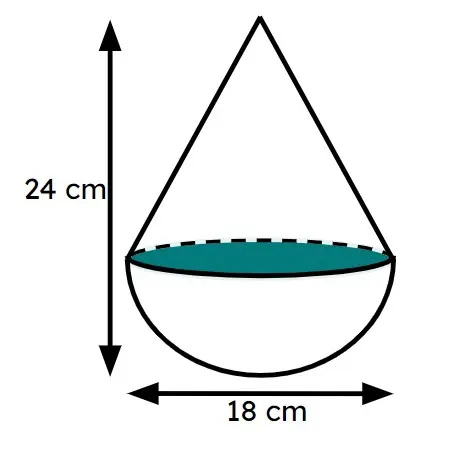Myths about teaching can hold you back
- Year 11
- Foundation
- Year 11
- Foundation
Volume of composite solids
I can calculate the volume of a composite solid.
These resources were made for remote use during the pandemic, not classroom teaching.
Switch to our new teaching resources now - designed by teachers and leading subject experts, and tested in classrooms.
Lesson details
Key learning points
- A composite solid can be decomposed to make the volume easier to calculate.
- Completing the solid may be a more useful method.
- Decomposing and rearranging parts of the solid may be beneficial.
Keywords
Volume - The volume is the amount of space occupied by a closed 3D shape.
Compound shape - A compound shape is a shape created using two or more basic shapes. A composite shape is an alternative for compound shape.
Common misconception
Pupils may only using given measures in their calculations, even when these are not the lengths required for substitution into a volume formula.
Encourage pupils to annotate diagrams to show how the are breaking down a compound/composite shape. Pupils should label the diagram with any new lengths needed. They may need to use Pythagoras or trigonometry to find these new lengths.
To help you plan your year 11 maths lesson on: Volume of composite solids, download all teaching resources for free and adapt to suit your pupils' needs...
To help you plan your year 11 maths lesson on: Volume of composite solids, download all teaching resources for free and adapt to suit your pupils' needs.
The starter quiz will activate and check your pupils' prior knowledge, with versions available both with and without answers in PDF format.
We use learning cycles to break down learning into key concepts or ideas linked to the learning outcome. Each learning cycle features explanations with checks for understanding and practice tasks with feedback. All of this is found in our slide decks, ready for you to download and edit. The practice tasks are also available as printable worksheets and some lessons have additional materials with extra material you might need for teaching the lesson.
The assessment exit quiz will test your pupils' understanding of the key learning points.
Our video is a tool for planning, showing how other teachers might teach the lesson, offering helpful tips, modelled explanations and inspiration for your own delivery in the classroom. Plus, you can set it as homework or revision for pupils and keep their learning on track by sharing an online pupil version of this lesson.
Explore more key stage 4 maths lessons from the 2D and 3D shape: surface area and volume (pyramids, spheres and cones) unit, dive into the full secondary maths curriculum, or learn more about lesson planning.

Licence
Prior knowledge starter quiz
6 Questions
Q1.A shape created using two or more basic shapes is called a shape.
Q2.This composite solid is constructed from two cuboids. All lengths given are in centimetres. Calculate the total surface area of the solid.
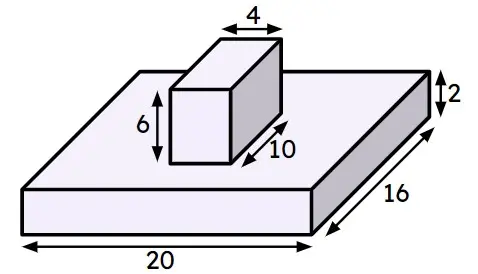
Q3.This composite solid is constructed from two congruent cuboids. All lengths given are in centimetres. The total surface area of the solid is cm².
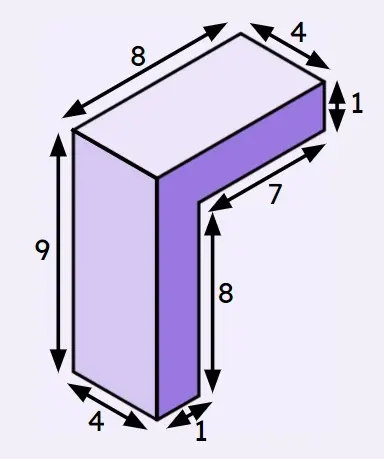
Q4.The composite solid is constructed by placing a hemisphere with diameter 8 cm on top of a cuboid. Find the surface area of the solid.
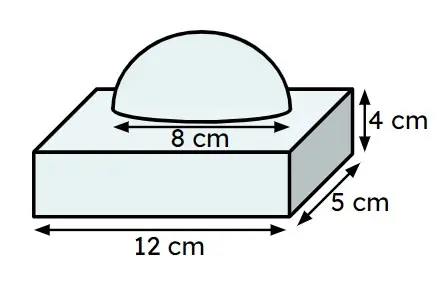
Q5.The composite solid is constructed with a cylinder and a hemisphere. Each have a diameter of 12 cm. Find the surface area of the solid.
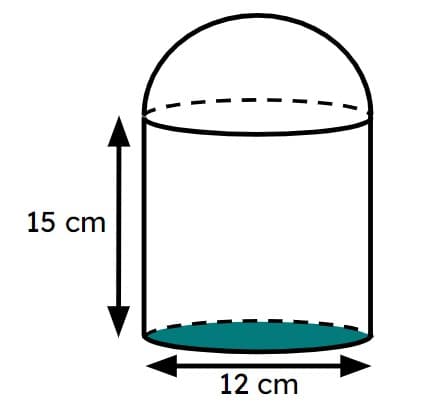
Q6.The composite solid is constructed with a cone and a hemisphere. The surface area, in terms of 𝜋, is 𝜋 cm².
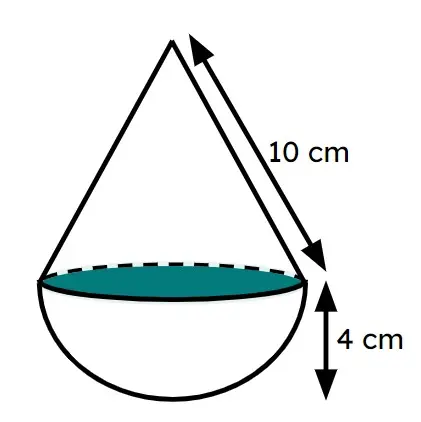
Assessment exit quiz
6 Questions
Q1.The amount of space occupied by a closed 3D shape is called the of the shape.
Q2.The diagram shows a composite solid constructed from two congruent cuboids. All lengths given are in centimetres. Which of these calculations give the total volume of the solid?
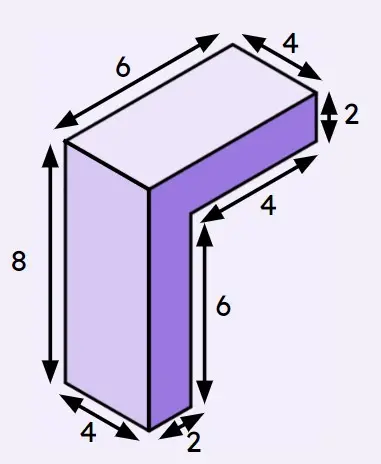
Q3.This composite solid is constructed from two cuboids. All lengths given are in metres. The total volume of the solid is m³.
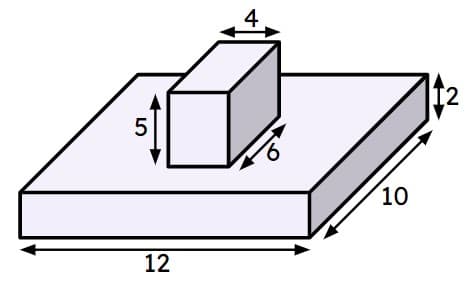
Q4.This composite solid is constructed by placing a hemisphere with diameter 12 cm on top of a cuboid. Find the volume of the solid. Give your answer to the nearest cubic centimetre.
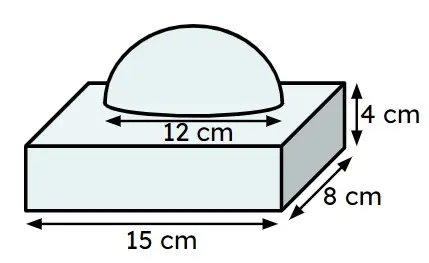
Q5.This composite solid is constructed with a cylinder and a hemisphere. Each have a diameter of 8 cm. The volume of the solid is cm³ (correct to 3 significant figures).
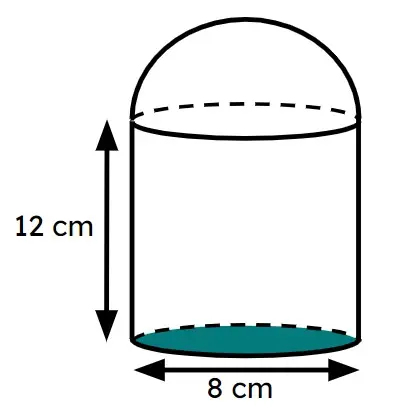
Q6.This composite solid is constructed with a cone and a hemisphere. The volume of the solid, in terms of 𝜋, is 𝜋 cm³.
